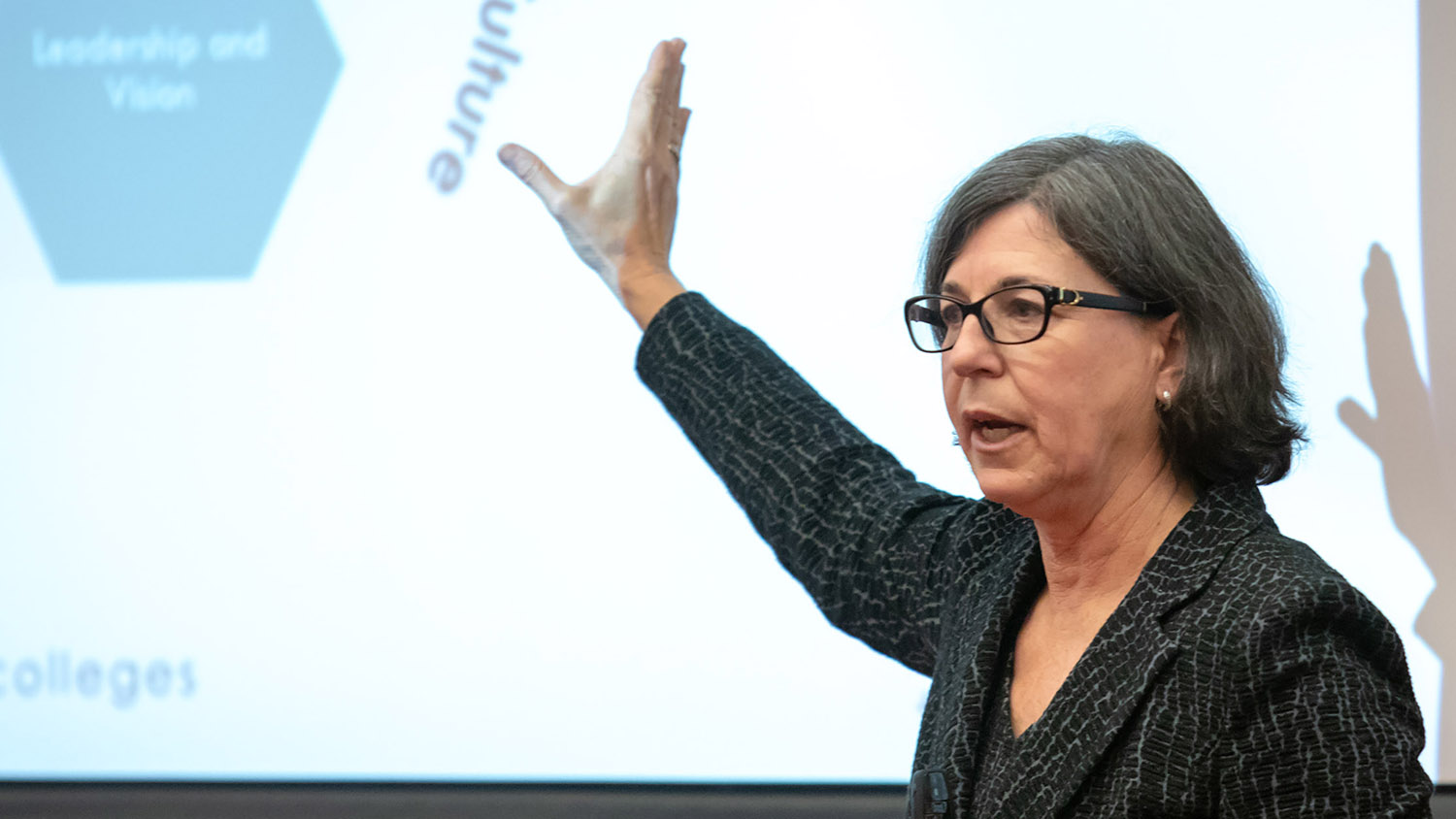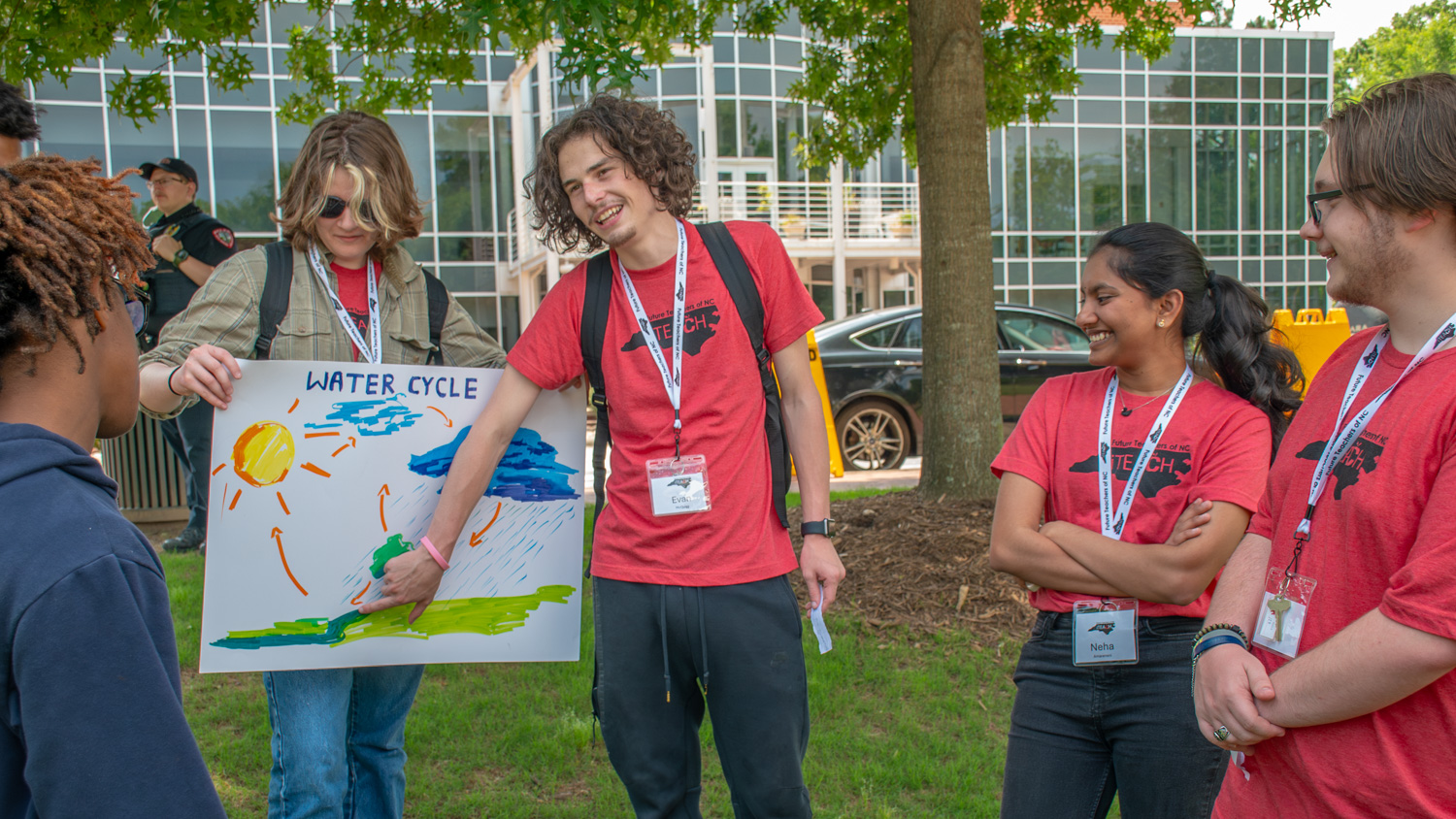Achieving the Dream President and CEO Karen Stout: “Creating Greater Urgency for Teaching and Learning in Institutional Reform is Long Overdue”

Through a national community college student reform movement that places students at the center of everything they do, community colleges have made collective gains in recent years in improving student retention and outcomes.
But these collective reform efforts still “have not yielded the desired results,” said Achieving the Dream President and CEO Karen Stout during the 2018 Dallas Herring Lecture she delivered Wednesday, Nov 28, at the NC State College of Education’s Friday Institute for Educational Innovation.
A reason why community colleges are still not meeting their goals? Reform efforts “have lacked an explicit focus on improving teaching and learning as a primary lever for institutional transformation,” Stout said.
To put students at the center, Stout added, “excellent teaching and support for quality instruction must be at the core of our reform work.”
In a lecture titled “The Urgent Case: Centering Teaching and Learning in the Next Generation of Community College Redesign,” Stout identified three key organizing principles to developing a culture of teaching and learning excellence:
- Full time and adjunct faculty are using inclusive evidence-based instructional practices to foster student learning.
- Students are engaged as active learners in an accessible, empowering, personalized, and supportive academic climate.
- Institutions are creating an organizational culture that embraces professional learning for continuous improvement.
There are also five building blocks to making a culture of teaching and learning excellence a reality, she added:
- Leaders must adopt continuous improvement models to drive innovation in curriculum and pedagogy.
- Leaders must invest in Centers for Teaching and Learning and align the work of the centers with their institution’s broader student-centered mission and student success agenda.
- Leaders must support faculty to approach their work from the diverse set of lived experiences, skills, and knowledge that their students bring to the campus and into the classroom.
- Leaders must develop and invest in an explicit adjunct faculty engagement strategy.
- Leaders can drive the design of a truly student-centered institution through teaching and learning.
Instituting these initiatives to address teaching and learning will require courageous conversations and visionary leadership, said Davidson Community College President Mary Rittling in her response to Stout’s lecture. “College leaders need to empower faculty to lead changes in pedagogy, rethink and align course and program learning outcomes, build coherent and clear course and program sequences, and [engage] in advising in various ways. . . . If we believe in the mission of our college, as leaders, this is our responsibility.”
Following Stout’s lecture and Rittling’s response, NC State College of Education Dean Mary Ann Danowitz presented Algie Gatewood ’94EDD, president of Alamance Community College, with the I.E. Ready Distinguished Leader Award. (Read More)
Associate Professor Tuere Bowles also presented four awards to doctoral students:
- Edgar J. & Ethel B. Boone Adult & Community College Leadership Fellowship: Jonathan Loss
- Thomas R. & Dorothy E. Koballa Fellowship: Susan Burleson
- Norman Anderson and J. Conrad Glass, Jr. Fellowship: Alain Ayangma
- Scott Community College Fellowship: Joyce Valentine
You can watch the entire Dallas Herring lecture here:
- Categories:


